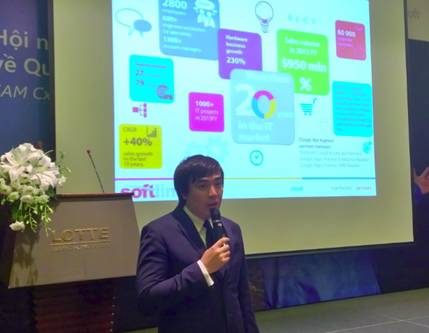Control costs and optimise software investments
VIR’s Hoang Anh talked to Max Orellana, regional licensing compliance director of Microsoft APAC, and Ilya Anzhiganov, business development manager of Softline in Southeast Asia, about to how to implement a SAM plan successfully.

What are the roles of a SAM system and why do businesses need to consider to build SAM?
Max Orellana: In an ever-changing global marketplace, companies are looking for every opportunity to gain a competitive advantage and simultaneously grow revenue, profits, and customer loyalty. Meanwhile, new regulatory requirements, competitive pressures brought on by an increasingly connected global economy, and technologies that “level the playing field” for companies of all sizes are making it more difficult for companies to stay ahead.
In this environment, the role of information technology (IT) is rapidly becoming a key strategic asset to support and drive innovation, profitability, and customer satisfaction. On one hand, increasing IT complexity has made it more difficult and costly to manage a company’s infrastructure and platform. On the other hand, the promise of strategic advantage a company can achieve through technology is driving new wave of IT investment.
All of the infrastructure and processes necessary for the effective management, control and protection of the software assets within an organisation, throughout all stages of their lifecycle.
As SAM is a global industry standard which endorsed by Microsoft and many others. SAM will help an organisation to control cost and risks, optimise resource and grow with technology.
SAM programmes should be critical part of any business’s strategic planning. As licences have become more complicated and their types have multiplied, managing them and the software to which they apply can produce lasting business value. SAM programmes implemented as part of your ongoing management practices not only ensure that software assets are accurately identified and legally deployed, but that they are used efficiently and cost- effectively to support your key IT and business initiatives.

What are specific benefits if businesses implement SAM?
Ilya Anzhiganov: The main benefit from SAM is effective business processes. It’s on the top. These processes allow a company to reduce costs and decrease legal risks. Companies spend a lot of money for software. But SAM answers the question if there is the reason to pay such money. And of course SAM allows us to use only legal software.
How has SAM been implemented in Vietnam and what are your business plan in the Vietnamese market?
Ilya Anzhiganov: At this moment we’ve finished three small SAM projects in Vietnam. Softline as a global company has got huge experience in SAM practice. We were the winner in SAM category globally at Microsoft Worldwide Partner Conference in 2011. So now we are going to roll out our practice in Vietnam. We see a lot of opportunities in this market.
It depends on what kind of services you choose and what kind of tools you prefer. The reality is that a lot of companies don’t need full cycle SAM processes. They need for instance just software inventory and licence compliance (software verification). It’s not full cycle SAM, but that helps companies get benefits. If we look at business processes we need high-level price business consultants to create processes and describe it. Of course all of it affects on price.
What the stars mean:
★ Poor ★ ★ Promising ★★★ Good ★★★★ Very good ★★★★★ Exceptional
Latest News
More News
- MoIT proposes scheme to boost renewable energy procurement (April 17, 2024 | 14:05)
- Suitable roadmaps can help SMEs in the ESG mission (April 17, 2024 | 08:56)
- Low emissions to stem from advances in rice (April 17, 2024 | 08:49)
- Lotte Rental enters Vietnam's car rental market (April 16, 2024 | 18:46)
- Samsung returns to top of the smartphone market: industry tracker (April 16, 2024 | 18:00)
- VitaDairy partners with KPMG Vietnam on digital transformation (April 16, 2024 | 16:38)
- Boeing says testing of 787 proves aircraft is safe (April 16, 2024 | 16:00)
- PwC rejects allegations on Evergrande audit (April 16, 2024 | 14:39)
- VinFuture Fund launches InnovaConnect 2024 event series (April 16, 2024 | 09:00)
- Vietnam’s agricultural products appeal to foreign customers (April 15, 2024 | 17:04)

















 Mobile Version
Mobile Version